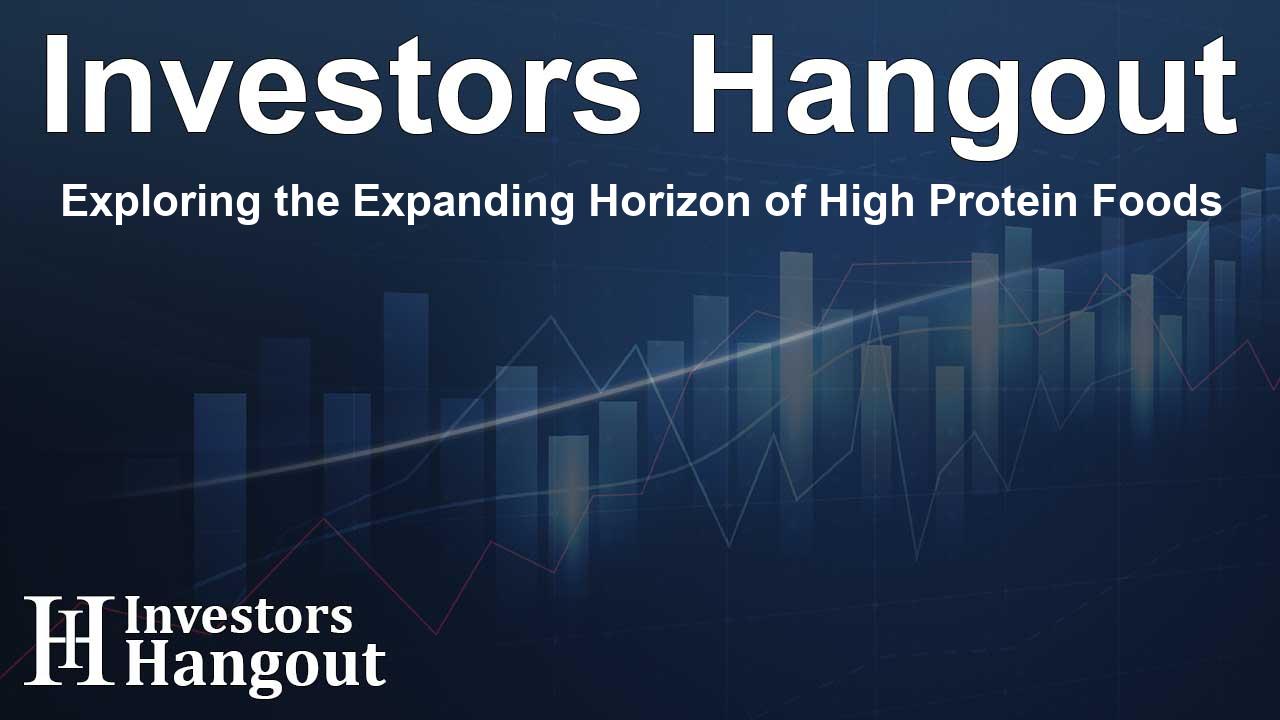Exploring the Expanding Horizon of High Protein Foods

Growth of the High Protein Food Market
The global market for high protein-based foods is on a remarkable upward trajectory. With an anticipated growth of USD 50.2 billion by the 2024-2028 period, the landscape of this market is evolving swiftly. A significant contributor to this growth is the increased consumer preference for natural and herbal food options, recognizing their health benefits. Artificial intelligence is also playing a key role in redefining market trends, allowing for better customer insights and targeted marketing strategies.
Market Dynamics: Drivers and Challenges
Various factors are propelling the expansion of the high protein food market. Creative marketing initiatives from sports brands such as Nike and Adidas have fueled interest, particularly endorsements from well-known athletes. Celebrities like Michael Jordan and Zlatan Ibrahimovic are not just public figures but powerful influencers in promoting health-conscious nutrition. Social media campaigns have proven to be effective in generating buzz around high protein foods, making them a popular choice among fitness enthusiasts.
The Role of Technology
As technology advances, so does the market's ability to produce innovative high protein products. Companies are not only focusing on traditional protein sources like meat and dairy but are also tapping into plant-based options, such as soy and legumes, promising to cater to the vegan and vegetarian demographics. This diversification is essential as consumers increasingly opt for convenient, nutritious meals that fit their busy lifestyles.
Current Market Trends
Additionally, the high protein food market has seen a surge due to heightened awareness regarding health and wellness. Diets rich in protein are now considered crucial for muscle growth and overall health maintenance. This shift is evident as consumers are greatly seeking out protein-rich products and snacks, leading companies to expand their offerings significantly.
Addressing Sustainability
Amid growing concerns over sustainability, the market is adapting to include sustainable protein sources. Brands are responding to the environmental impact of traditional animal agriculture by innovating and investing in technology that allows them to create plant-based proteins. The incorporation of functional foods that are both protein-rich and environmentally friendly is becoming a priority within the industry.
Future Forecasts
The forecast for the high protein food market shows a Compound Annual Growth Rate (CAGR) of 8.65%. Despite facing regulatory challenges, particularly for adherence to quality standards, companies are keen on navigating these waters to maintain growth momentum. The market structure remains fragmented, yet it presents opportunities for collaboration and partnership among stakeholders. Emerging companies are showcasing innovations that cater to diverse dietary needs, establishing a competitive edge in the market.
Market Segmentation Insights
Understanding market segmentation is vital to uncovering potential revenue streams. The high protein food market can be segmented based on product type, distribution channel, and geography. Popular product types include protein drinks, protein supplements, and fortified packaged foods. Online channels are progressively gaining traction as consumers shift toward e-commerce for their grocery needs.
Geographic Perspectives
Having a global view, regions like North America contribute significantly to the high protein food market, supported by the burgeoning trend of healthful eating and lifestyle changes. The demand for high protein products also extends to Europe and Asia-Pacific, where plant-based diets are increasingly popular.
Key Players in the Market
The competitive landscape features numerous key players, including Abbott Laboratories, Beyond Meat Inc., and Nestle SA, each contributing unique innovations to the market. Their infrastructures and distribution networks play a critical role in ensuring consumers have access to diverse high protein products. Companies are compelled to actively innovate to meet evolving consumer expectations and preferences.
Frequently Asked Questions
What is driving the growth of high protein foods?
The shift in consumer preferences towards healthier, natural food options and increased awareness regarding the benefits of protein-rich diets are key growth drivers.
How is technology impacting the high protein food market?
Technology is enabling companies to innovate their product offerings, creating plant-based proteins and enhancing nutritional profiles of existing foods.
Who are the leading players in the high protein food market?
Key players include Abbott Laboratories, Beyond Meat Inc., and Nestle SA, among others, each pioneering in production and marketing strategies.
What challenges does the market face?
Regulatory challenges and the necessity for sustainable practices are significant hurdles for companies in this market.
What types of products dominate the high protein food market?
Popular items include protein drinks, supplements, and fortified packaged foods, catering to various consumer preferences.
About Investors Hangout
Investors Hangout is a leading online stock forum for financial discussion and learning, offering a wide range of free tools and resources. It draws in traders of all levels, who exchange market knowledge, investigate trading tactics, and keep an eye on industry developments in real time. Featuring financial articles, stock message boards, quotes, charts, company profiles, and live news updates. Through cooperative learning and a wealth of informational resources, it helps users from novices creating their first portfolios to experts honing their techniques. Join Investors Hangout today: https://investorshangout.com/
Disclaimer: The content of this article is solely for general informational purposes only; it does not represent legal, financial, or investment advice. Investors Hangout does not offer financial advice; the author is not a licensed financial advisor. Consult a qualified advisor before making any financial or investment decisions based on this article. The author's interpretation of publicly available data shapes the opinions presented here; as a result, they should not be taken as advice to purchase, sell, or hold any securities mentioned or any other investments. The author does not guarantee the accuracy, completeness, or timeliness of any material, providing it "as is." Information and market conditions may change; past performance is not indicative of future outcomes. If any of the material offered here is inaccurate, please contact us for corrections.